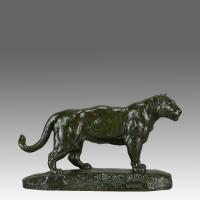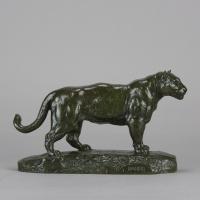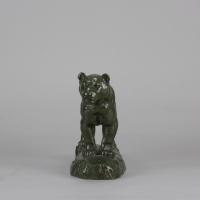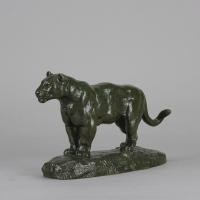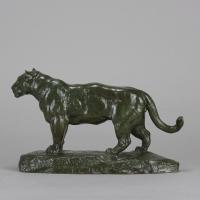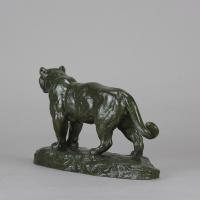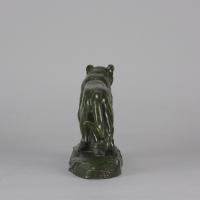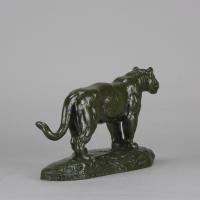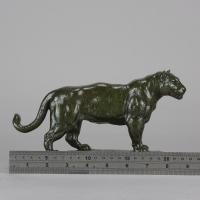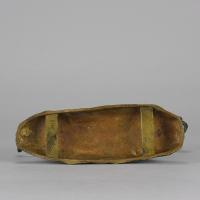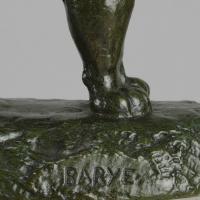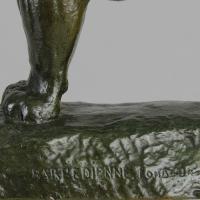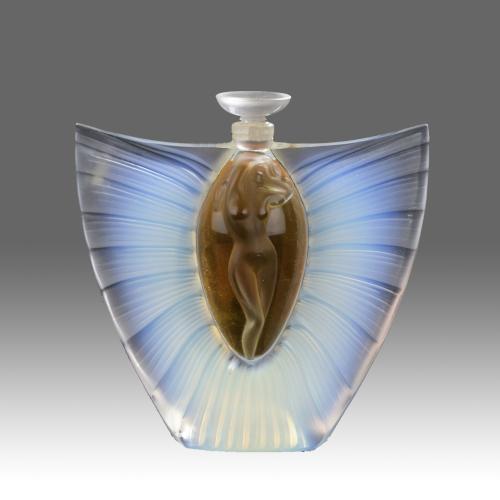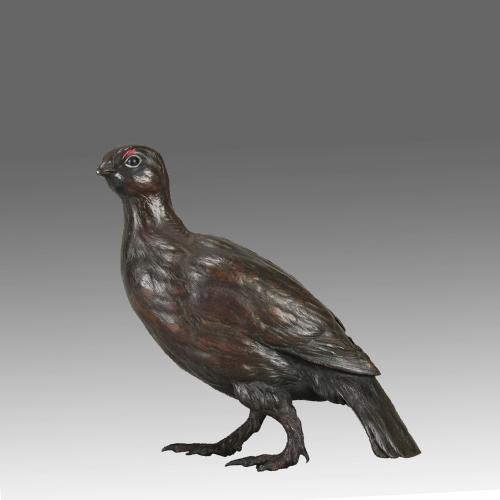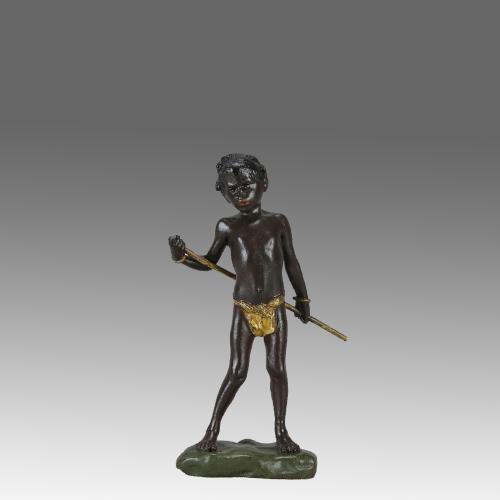
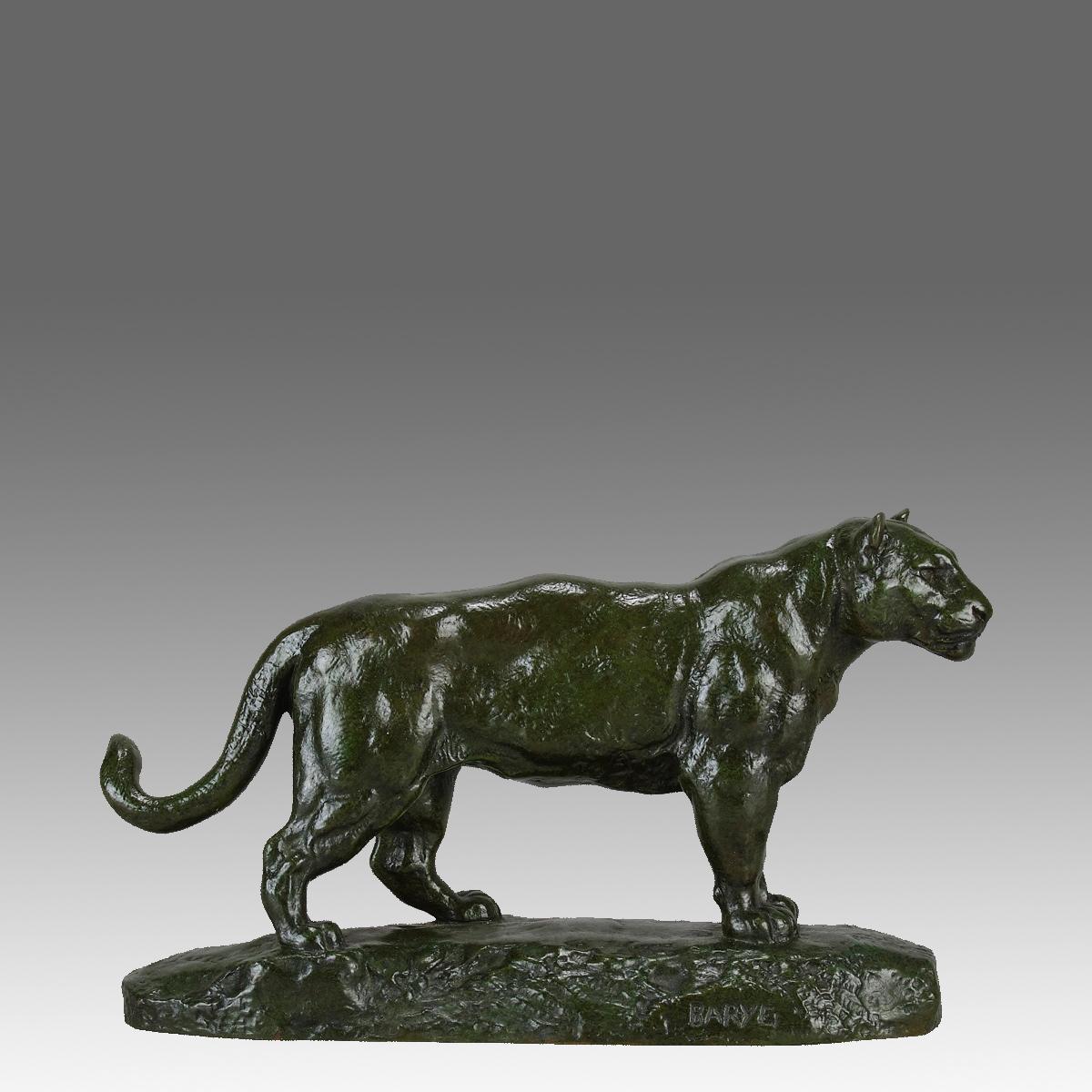
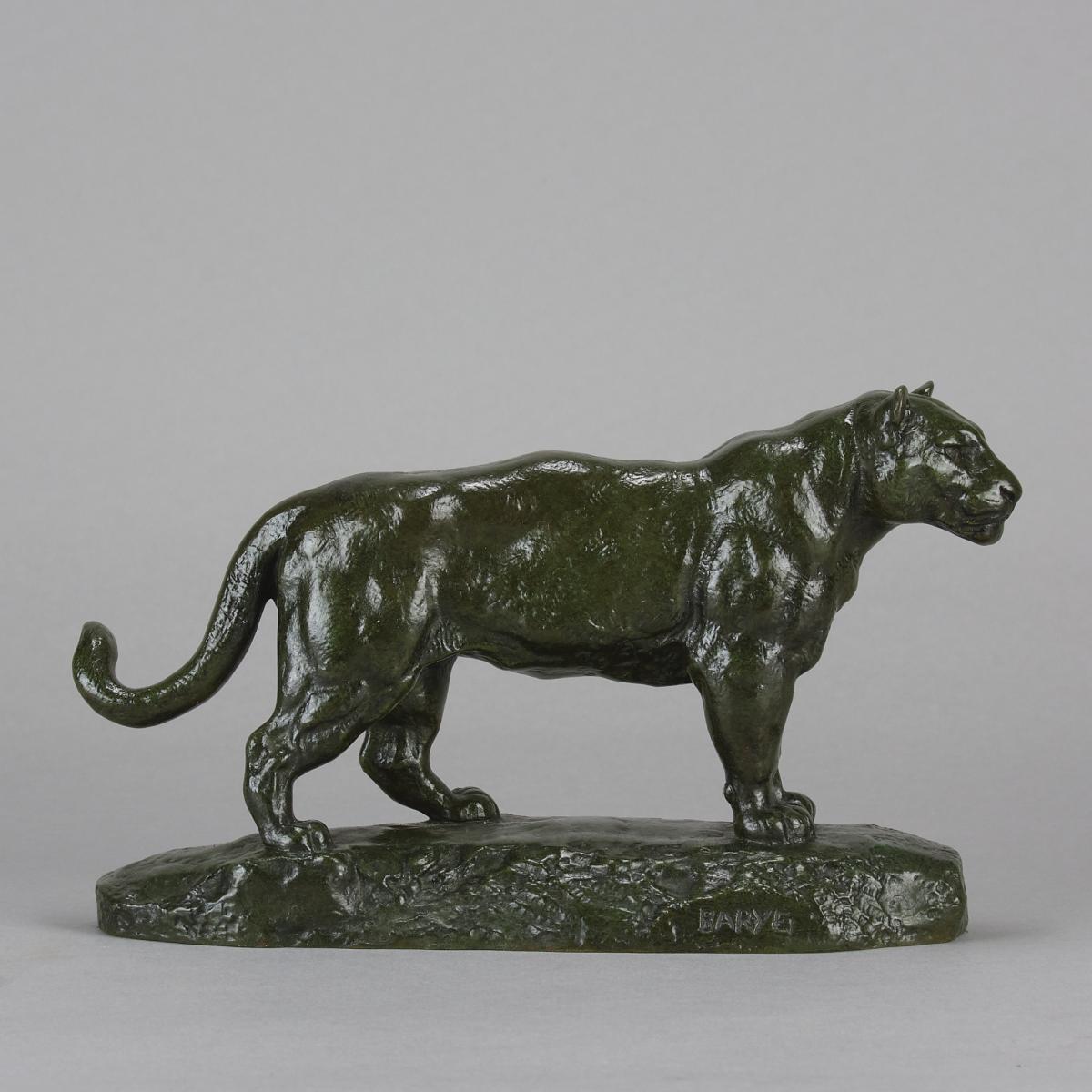
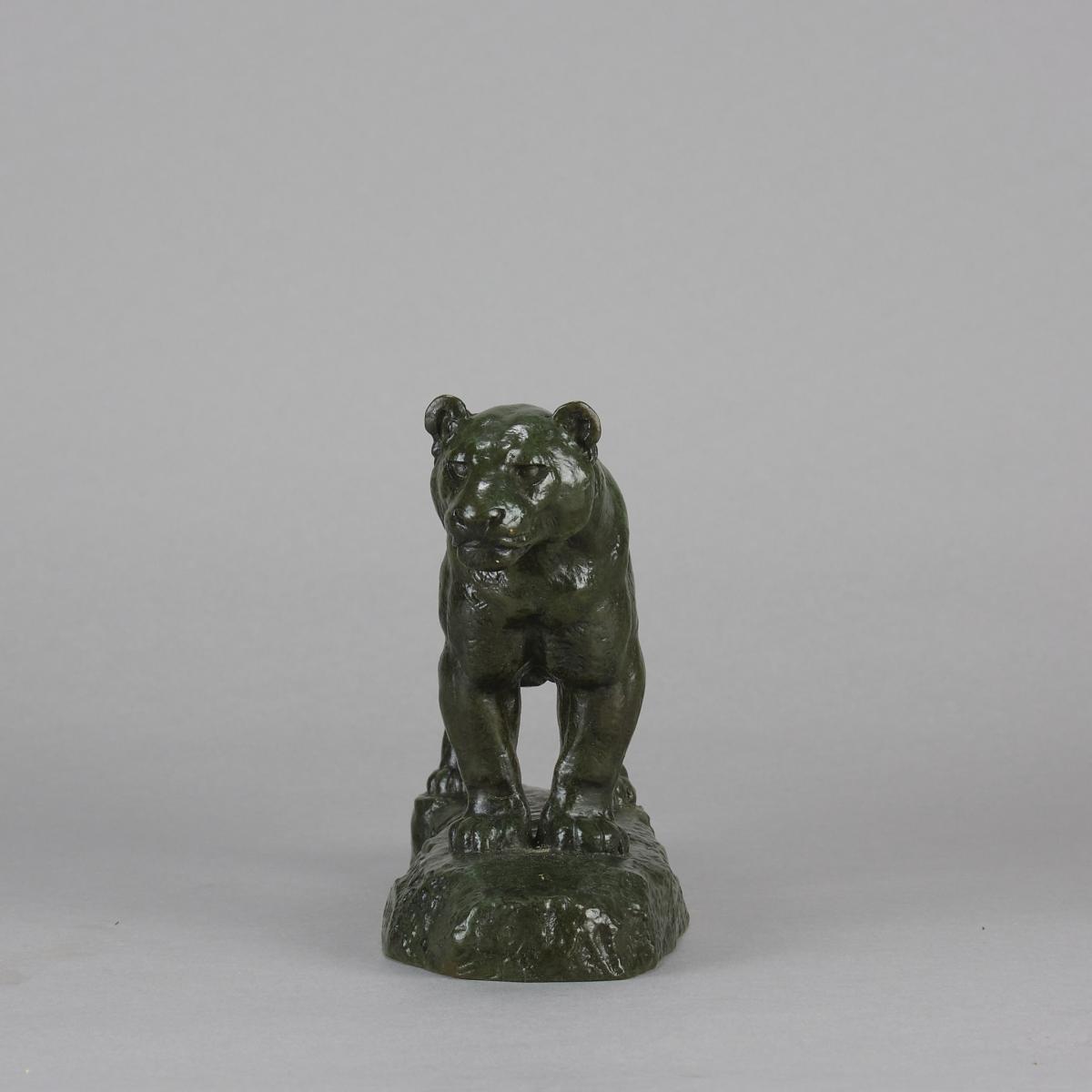
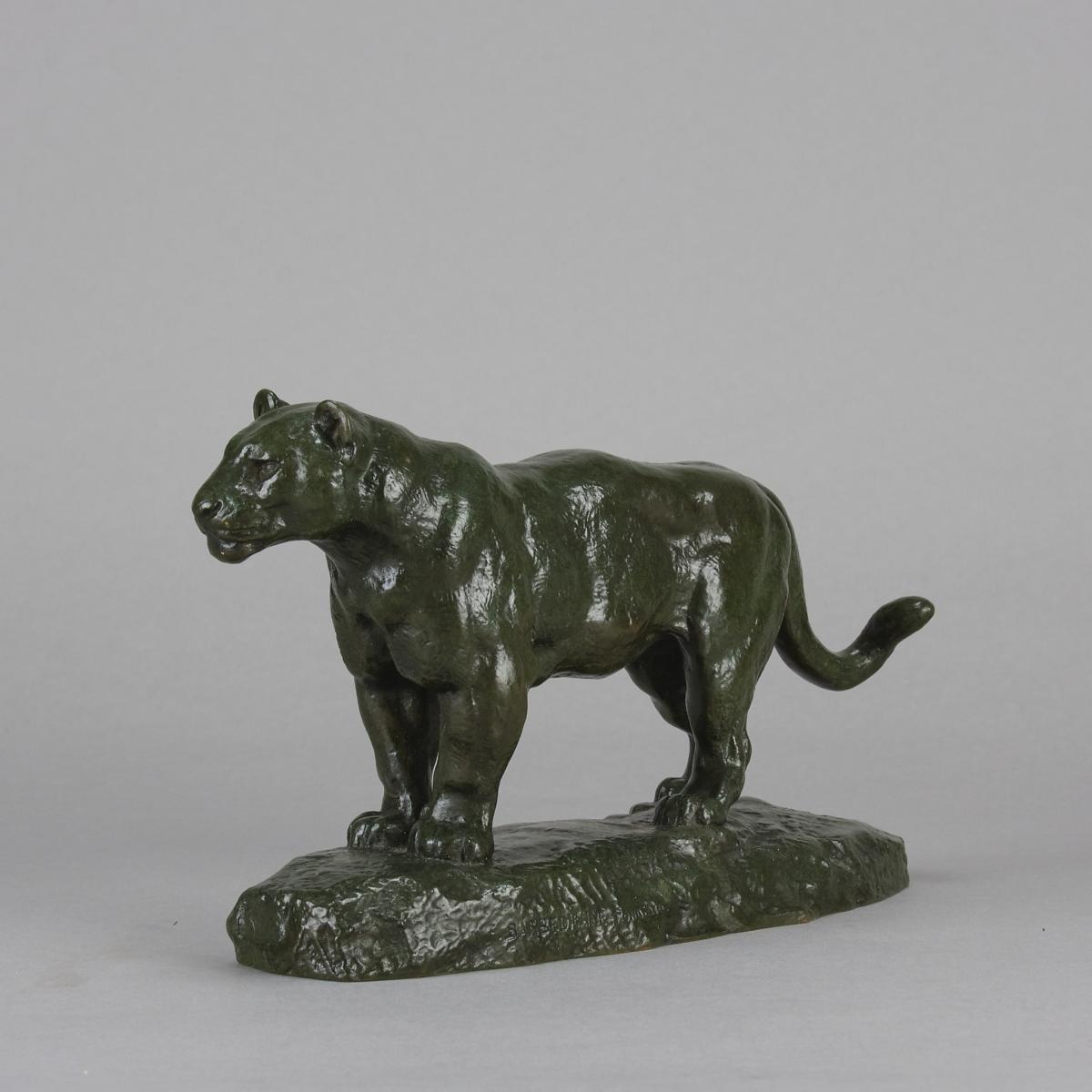
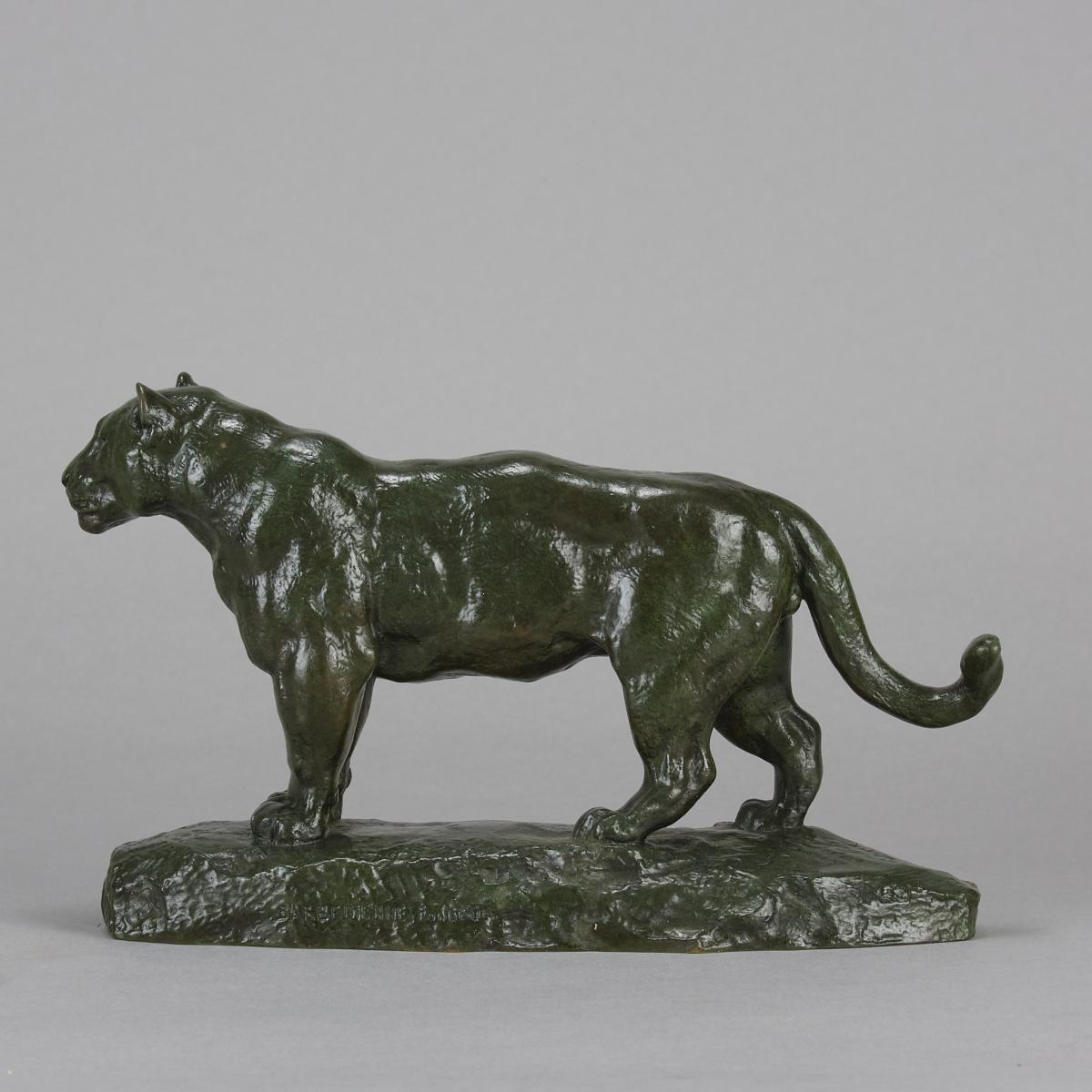
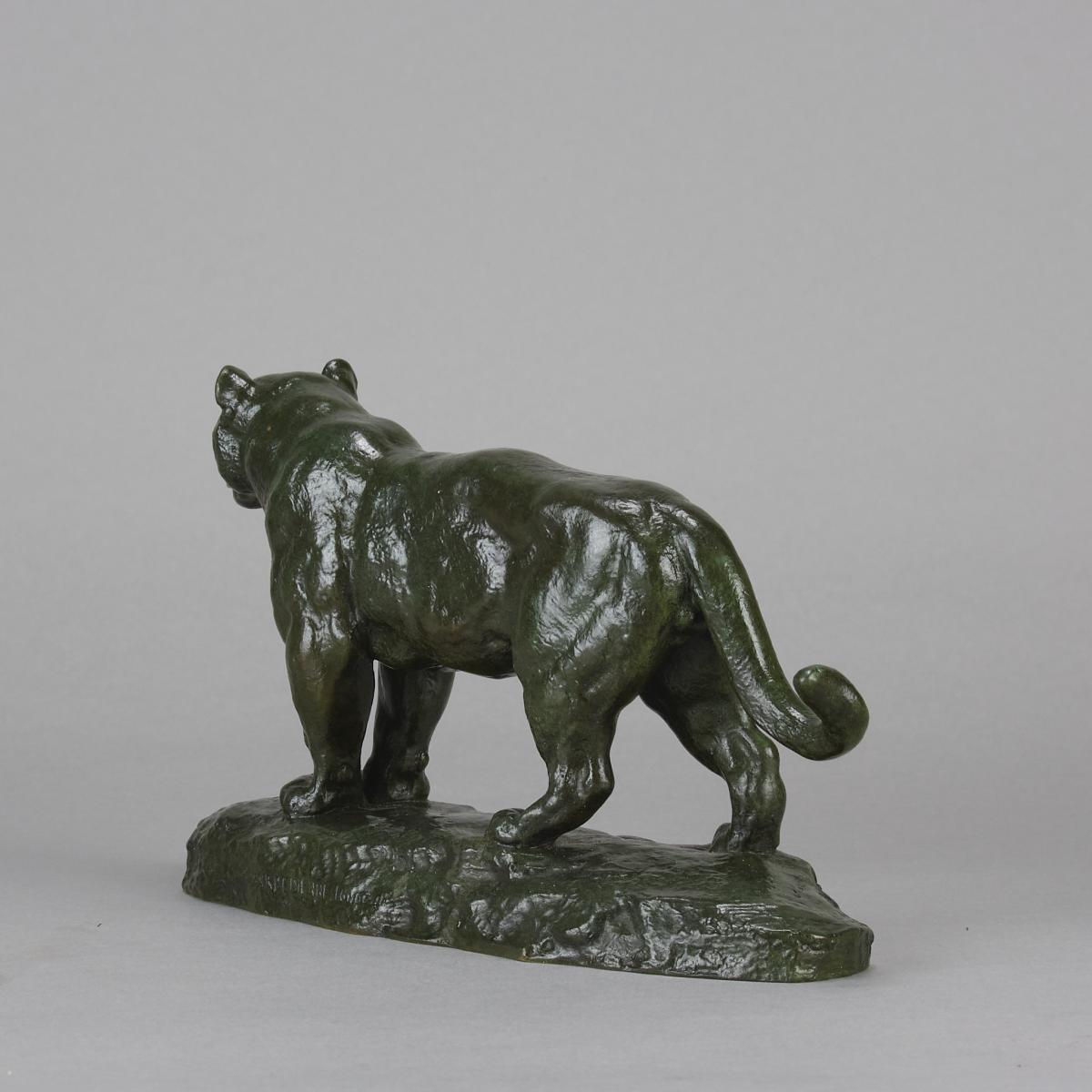
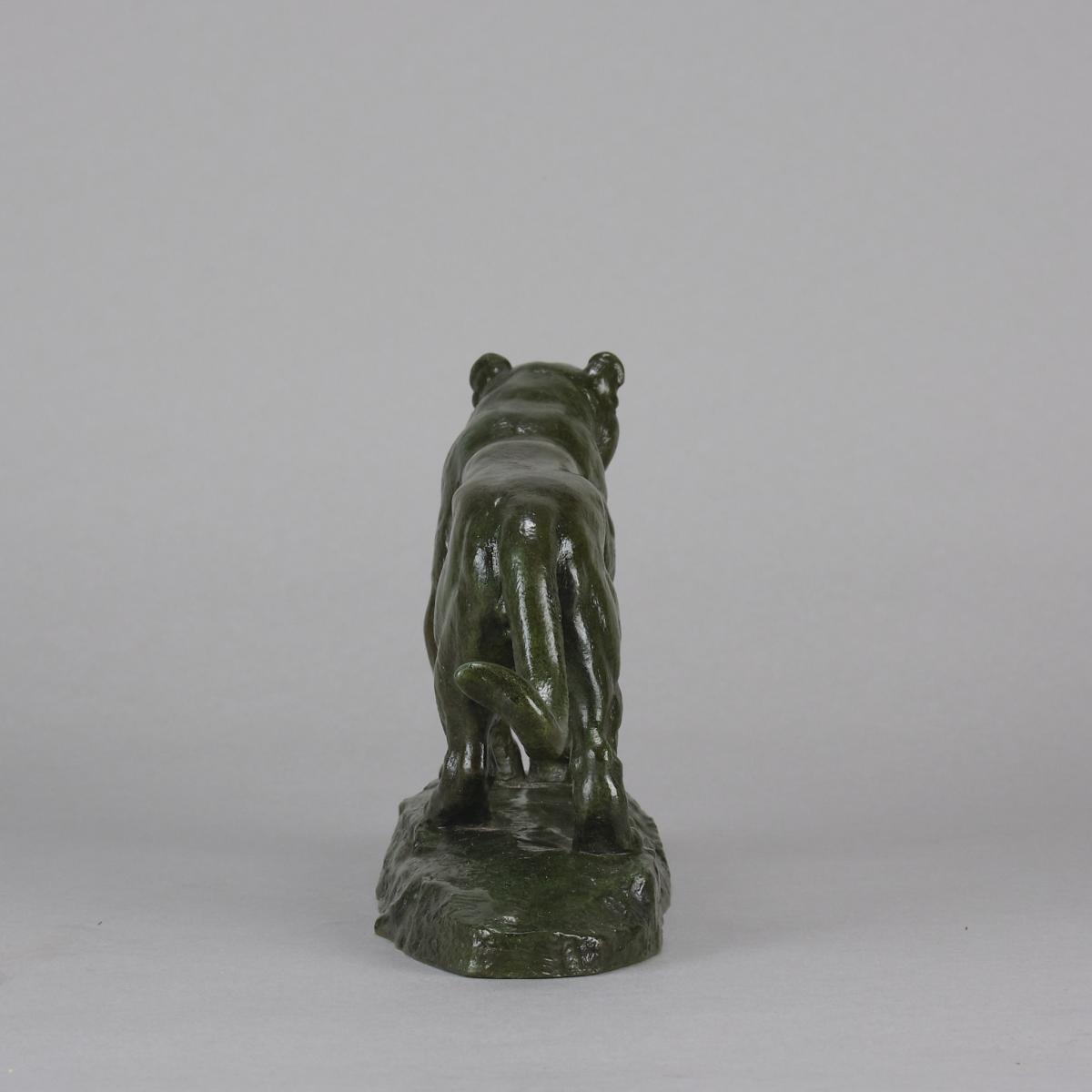
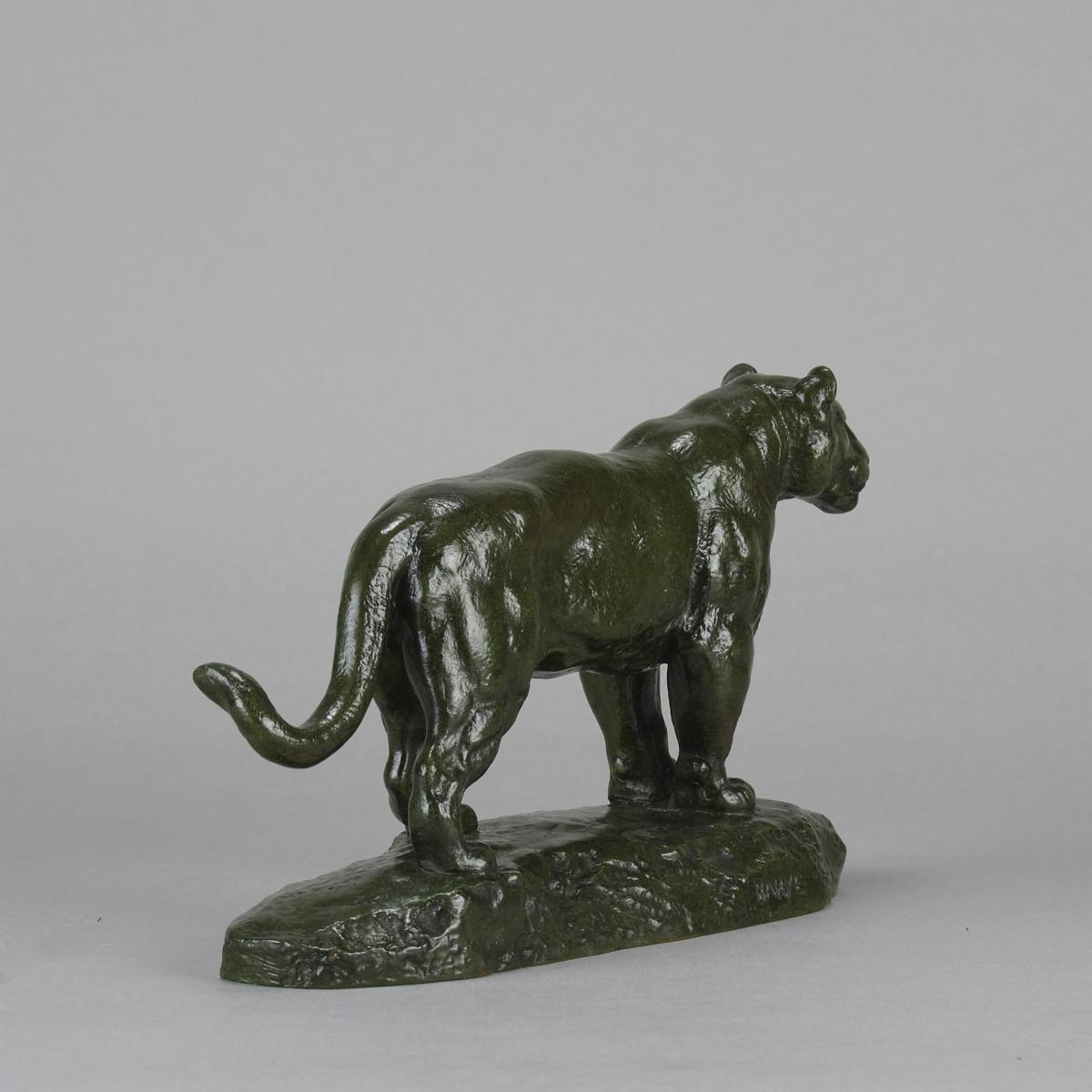
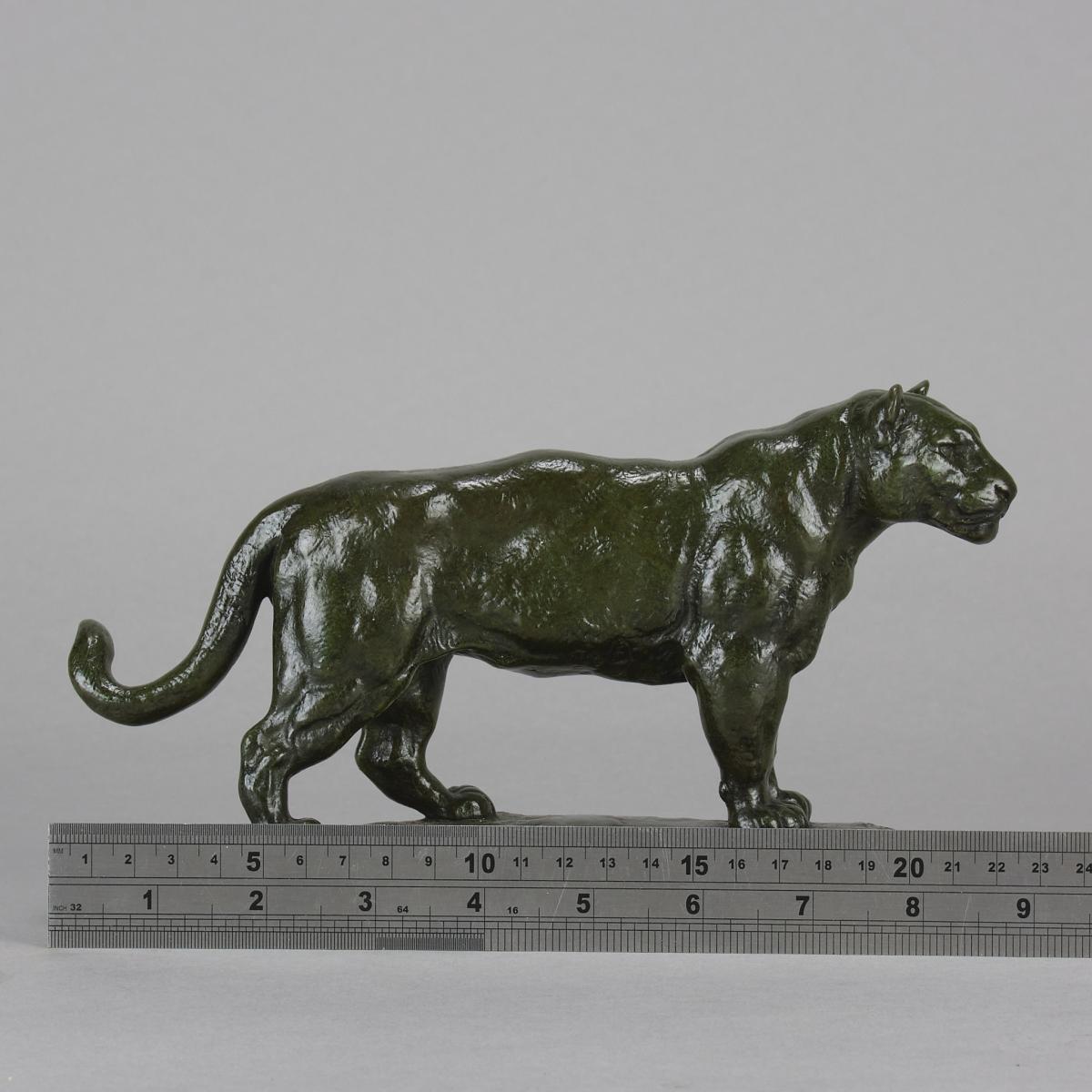
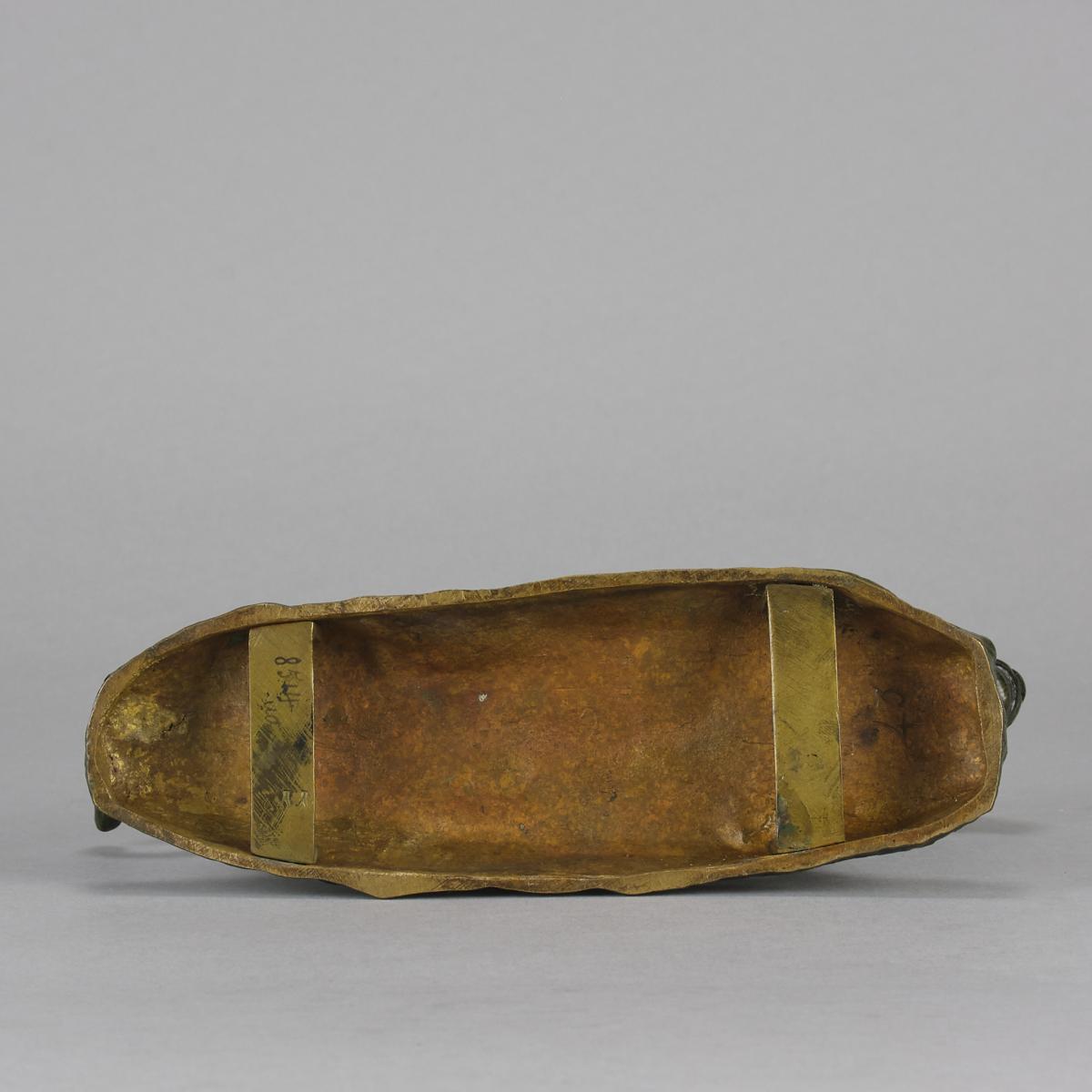
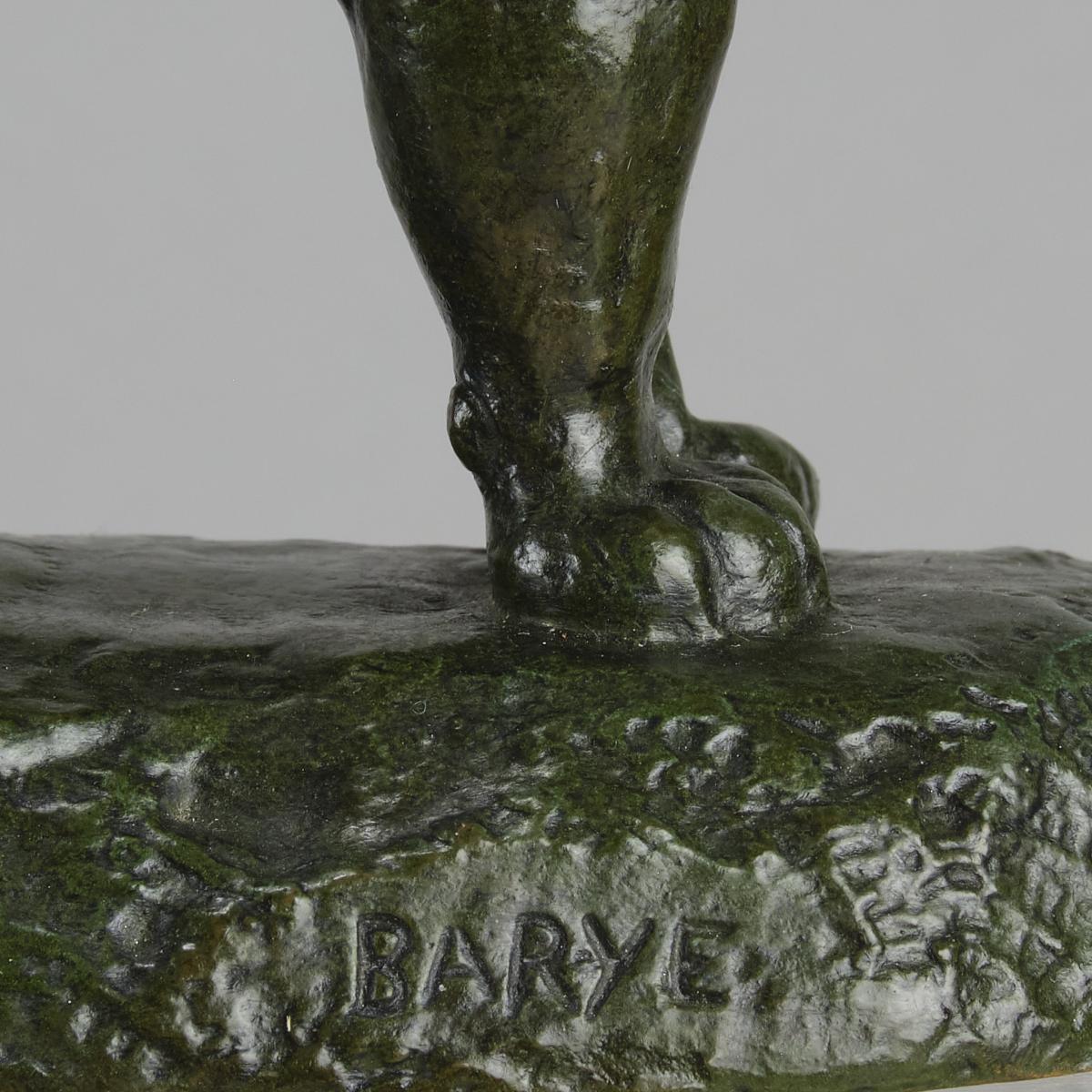
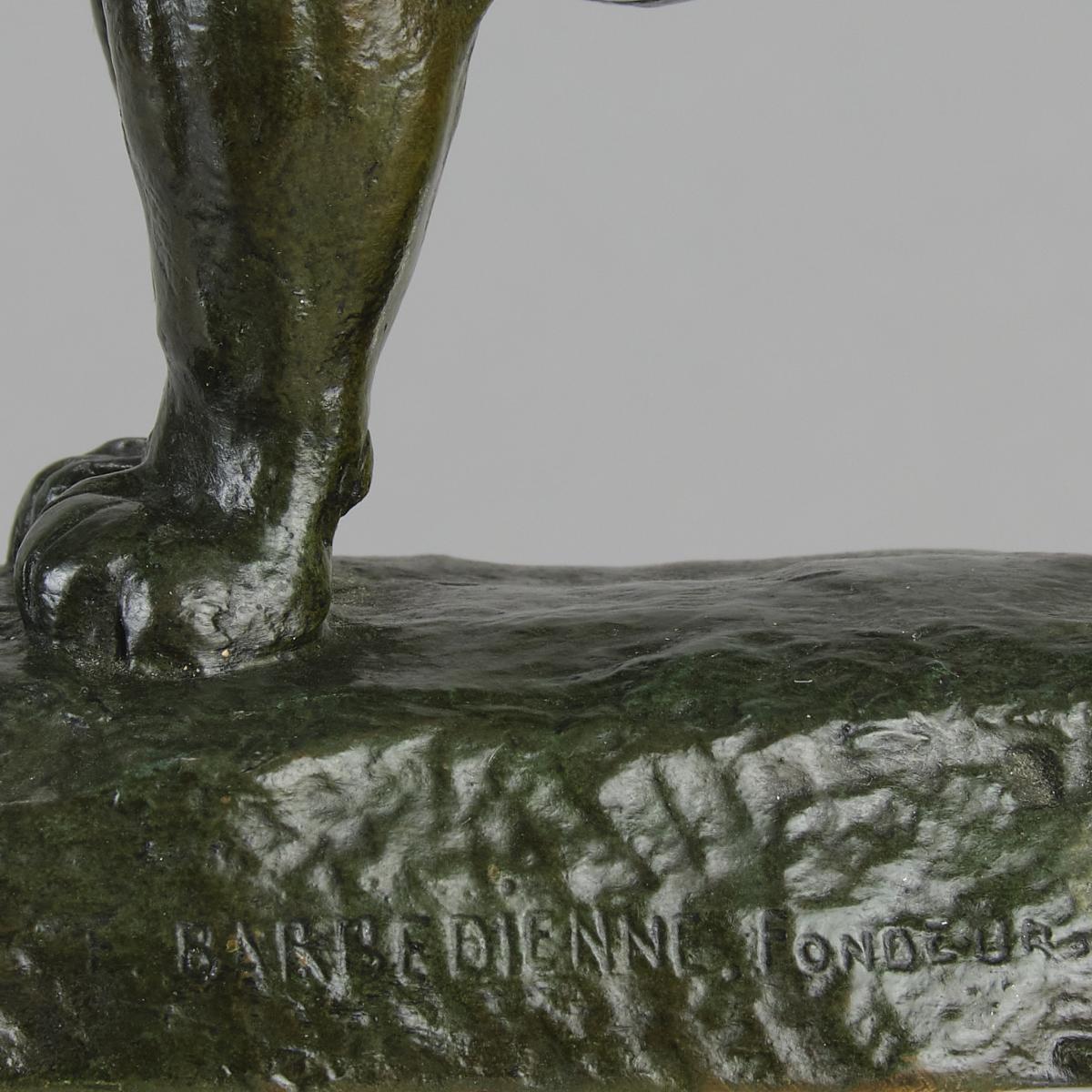
Price
£4850.00This object is eligible for a Certificate of BADA Provenance
The BADA Standard
- Since 1918, BADA has been the leading association for the antiques and fine art trade
- Members are elected for their knowledge, integrity and quality of stock
- Our clients are protected by BADA’s code of conduct
- Our dealers’ membership is reviewed and renewed annually
- Bada.org is a non-profit site: clients deal directly with members and they pay no hidden fees
An impressive late 19th Century Animalier bronze study of a standing panther with excellent rich green patina and very fine hand chased surface detail. Raised on an integral base, signed Barye and inscribed F Barbedienne Fondeur.
ADDITIONAL INFORMATION
Height: 13 cm.
Width: 22.5 cm.
Depth: 7 cm.
Condition: Excellent Original Condition.
Circa: 1870.
Materials: Bronze.
Foundry: F.Barbedienne Paris.
Book Ref: BARYE Catalogue Raisonne des Sculptures by Michel Poletti – Alain Richarme.
Page no.231.
SKU: 9121.
ABOUT
Antoine Louis Barye
“The Michelangelo of the Menagerie”
These are the words of Théophile Gautier in praise of Barye’s genius. Throughout his life Barye endeavoured to capture the fundamental nature of the animal kingdom in all its diversity, wild or tame, exotic or familiar, cruel or gentle, bringing to life the roaring, trembling, living beasts.
The son of a goldsmith, apprenticed to a steel engraver at a young age, Barye found himself making moulds for ornaments, acquiring knowledge that he would later build on to produce his exquisitely chased bronzes. When he was called up at seventeen, he joined the army’s topographic brigade where he used clay to model raised relief maps. When the empire fell, Barye briefly studied with the sculptor François-Joseph Bosio, then moved to the studio of painter Antoine-Jean Gros. There he encountered a burgeoning Romanticism that seemed closer to his own aspirations and penchant for drawing, something that would become a major part of his life’s work.
Barye began working for the goldsmith Jacques Henri Faucnnier in 1820 and became a regular visitor at ‘Le Zoo du Jardin des Plantes‘ the National Museum of Natural History and its menagerie in Paris, where he studied the wild animals under the watchful eye of the lion keeper Mr Rousseau. As well as studying live animals, he practised dissection with Eugène Delacroix and noted his observations on his drawings. This gave Barye the impetus to move away from the neoclassical and Renaissance styles where animal subjects were treated as ‘additions’ or ‘supplements’ to art and regarded as inferior, allowing him to single handedly turn the study of ‘Animaliers‘ into one of the most important art forms of the 19th Century.
Barye received his first official acclaim at the 1831 Paris Salon. This recognition encouraged him to open his own studio or ‘atelier’, where he produced an Elephant that would become the Duc d’Orleans family’s first major acquisition. At the 1833 Salon Barye unveiled his emblematic Lion et Serpent, which the French State purchased and had cast as a monumental bronze for the Tuileries Gardens.
Having mastered lost-wax casting, Barye opened his own foundry in 1838 and there he took sand casting to a new level. He brought his bronzes to life, honing them with unrivalled chasing and a subtle range of patinas (colours). Struck by the vitality of Lion et Serpent François Lenormand remarked, “The first time I saw it, I thought the lion moved. Yesterday I heard it roar”.
Stock number
9121The BADA Standard
- Since 1918, BADA has been the leading association for the antiques and fine art trade
- Members are elected for their knowledge, integrity and quality of stock
- Our clients are protected by BADA’s code of conduct
- Our dealers’ membership is reviewed and renewed annually
- Bada.org is a non-profit site: clients deal directly with members and they pay no hidden fees


